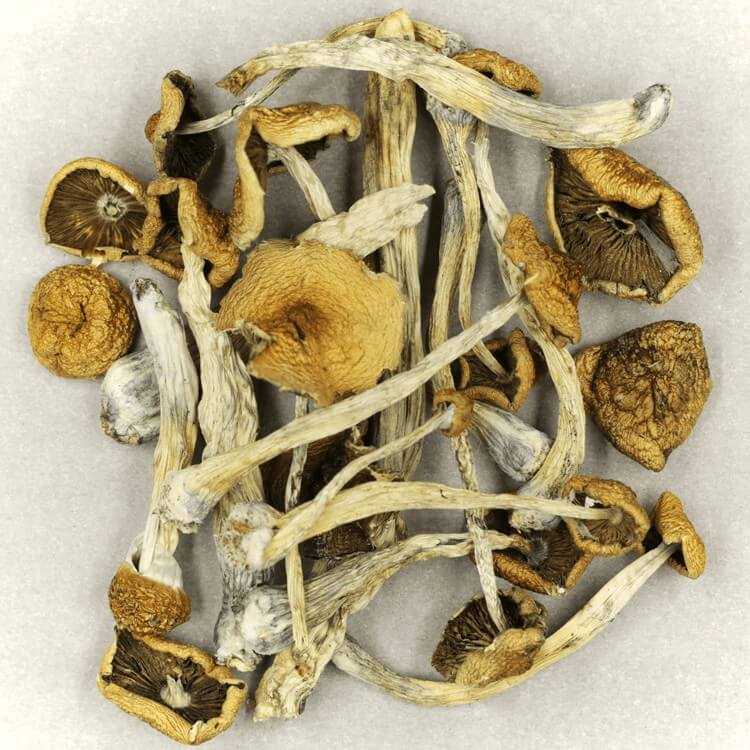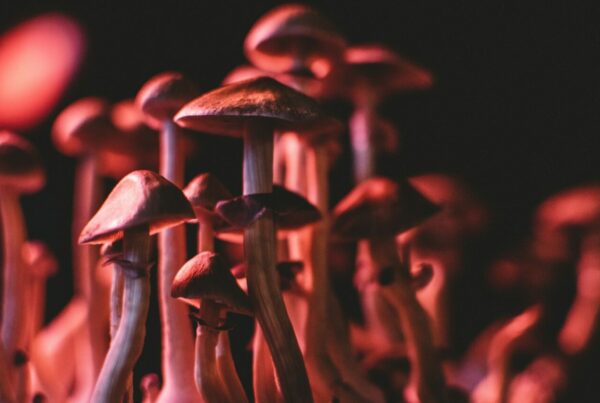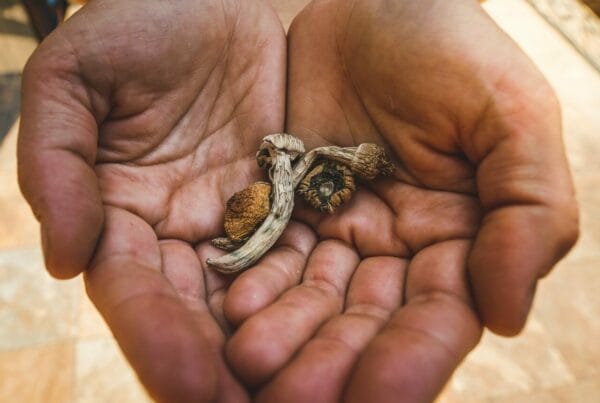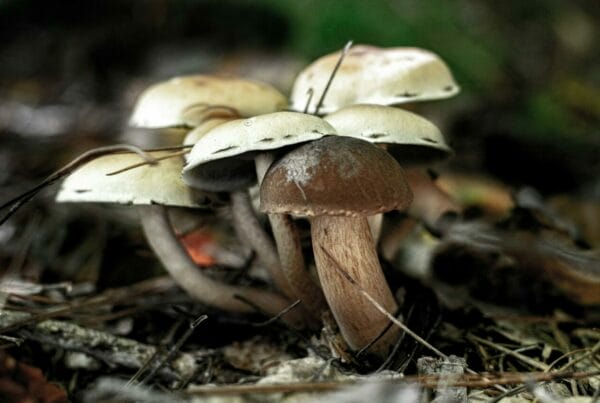Once thought to be mere fantasy, the strength of Psilocybe mexicana has gained recognition due to ongoing psilocybin research. Regular discoveries about its therapeutic qualities by the psychedelic research community are slowly leading to its acknowledgement in the medical sector. Experts see this emergent field as promising and are persistently working towards determining safe dosage levels for medicinal usage.
Key Takeaways
- Researchers are utilizing advanced techniques like liquid chromatography and tandem mass spectrometry to ascertain the potency of mushrooms.
- Clinical trials are being conducted to evaluate the potential therapeutic applications of Psilocybe Mexicana and other similar mushrooms.
- The genetic variation in magic mushrooms is crucial for formulating an accurate dosage map.
Psychedelic Mushrooms: Transition from Ambiguity to Groundbreaking Research
Psilocybe Cubensis was previously known to be beneficial for a limited number of conditions. However, psilocybin is now making considerable progress in revealing its concealed medicinal properties.
Psilocybe Mexicana and other potent strains are being capitalized on by experts for extensive research and clinical trials. Regardless of the subjects being in vivo or in vitro, this strain effectively showcases the most genuine effects and benefits of the fungus species.
The Rise of Psychedelics in the Market
Once shrouded in mystery, continuous breakthroughs and findings about psychedelics are increasingly attracting public attention, especially amongst those seeking therapeutic solutions. Traditional treatments for mental health issues often prove inadequate, leading individuals to explore more effective alternatives.
Enter magic mushrooms.
Patients struggling with mental health disorders are turning to psilocybin, which has demonstrated potential in treating depression, alcohol dependency, anxiety, compulsive disorders, tics, chronic pain, and more.
Currently, medical professionals are investigating novel ways to accurately determine the optimal dosage for safe patient administration. Notably, a group of researchers from the University of Texas has devised a model to extract psilocybin and psilocin concentrations.
The clinical establishment of magic mushrooms’ potency is attainable.
The Distinctive Traits of Mexicana
Golden Teachers, Blue Meanies, and B-Plus are species of magic mushrooms that have been thoroughly investigated. However, in order to expand our comprehension of safe usage of these psychedelic fungi, it is crucial that researchers delve into other less-studied species.
One such species that has gained interest in the research community is the Mexicana. This species has not only piqued curiosity because it’s one of the oldest known, but also due to its relatively low potency, which may make it more compatible with medical drug standards.
Despite the Mexicana’s less potent nature compared to other species, it can still produce effects akin to its more potent counterparts. As microdosing mushrooms gains traction among patients, the Mexicana species emerges as a viable candidate.
The Mexicana maintains consistent levels of psilocybin and psilocin, similar to other popular strains. So, what sets it apart? Its rich history and anthropological significance provide compelling reasons.
Digging into a Rich “Mexican” Heritage
Historically, the psilocybe mexicana mushroom thrived naturally in moss, and indigenous cultures held these psilocybin mushrooms in high esteem, often associating them with mystical or spiritual experiences.
Let’s shift our focus to these Mexican mushrooms. In North and Central America, the earliest known use of these mushrooms was over 2000 years ago by the local indigenous people. The Aztecs, an ancient civilization, labeled these mushrooms as “God’s food,” or “teonanácatl” in their language.
If the Aztecs were present today, they would likely affirm the transformative, emotionally impactful, and mentally balancing effects of the Mexicana, even though they might not comprehend these modern terminologies.
Despite the evolution of cultivation techniques over time, this mushroom has retained its natural psilocybin levels, reinforcing its authenticity. This genuineness is a standard that researchers and psychedelic research institutions highly appreciate.
Innovative Methods for Analyzing Psilocybin Concentration and Potency
A team of ten researchers, hailing from the University of Texas at Arlington and other esteemed institutions, have devised a new way to evaluate the potency of psychoactive compounds in mushrooms. This innovative method merges liquid chromatography and tandem mass spectrometry.
Below are two groundbreaking techniques:
- Liquid chromatography is a technique that separates and analyzes chemical mixtures. It’s particularly used to analyze the active chemicals in shrooms. The method involves passing a liquid sample through a column filled with a solid (stationary phase). The interaction of different chemicals in the sample with the stationary and mobile phases causes them to separate at different rates as they travel through the column.
- Spectrometry is commonly used to study the interaction between matter and electromagnetic radiation across various wavelengths. It identifies and quantifies substances based on the specific wavelengths of light that molecules absorb and scatter, thereby determining the electronic, vibrational, and rotational states of the chemical.
This method was employed on five strains of magic mushrooms. The research revealed the average total levels of psilocybin and psilocin across these strains varied between 0.879 to 1.36. These concentrations were higher than many other strains, such as Bull Run and Cambodian. The researchers validated the precision of their study by comparing their findings with those from other independent labs.
The consistency of the results between the two labs further confirmed the reliability of their testing process in accurately determining the potency of the shrooms.
If these findings are confirmed by experts, they could contribute to a new set of techniques for the existing psychedelic strength testing methods, providing an extra layer of safety against inaccurate dosage determinations.
Broadening Research to Other Species
Extending research to include other species is advantageous. It could deepen our knowledge of the health benefits linked to different strains and provide essential data on the effects of less potent mushrooms.
Moreover, it could assist in educating individuals about the influence of different dosages on the psychedelic experience. By comparing strains like Mexicans with more powerful ones like Psilocybe Cubensis, researchers can understand how different concentrations of active compounds can affect therapeutic results.
For example, the Blue Meanies strain produces more potent hallucinogenic effects, which could potentially be effective in treating conditions like depression. Conversely, strains with lower doses might be more suitable for microdosing or subtler uses such as mood enhancement or focus improvement.
Genetic Variety Contributes to Safer Treatments
It’s not widely known that distinct cultivars or varieties have unique genetic profiles and
Psychedelic mushrooms vary in potency, chemical composition, and effects. This variation helps healthcare professionals make informed decisions when selecting the most suitable type for specific medical applications. They can then customize doses to suit individual requirements, thereby minimizing risks and maximizing benefits.
Take for instance, Psilocybe Semilanceata (Liberty Caps) or Psilocybe cyanescens, both of which possess unique alkaloid profiles potentially effective for anxiety treatment. On the other hand, certain synthetically grown mushrooms may be more fitting for treating substance abuse or compulsive behaviors. Such diversity allows for the development of tailored treatments that offer improved safety and efficacy.
It can be concluded that the genetic diversity in hallucinogenic mushrooms, alongside innovative techniques for potency evaluation and identification, plays a vital role in creating safer medical treatments.
Enhanced Safety in Medical Applications
Let’s ponder on the implications of safer dosage administration.
- Lower risk of overdosing: Accurate dosing eliminates the fear of overdosing. This also suggests that product labels should be made more comprehensible to avoid consumer misunderstanding.
- Improved predictability: With accurate dosing, individuals can better anticipate their experiences during the trips. This can help to reduce overwhelming sensations and anxiety, ultimately leading to greater patient satisfaction.
- Standardized measurement: Accurate dosing can encourage the use of a standardized metric, enabling people to easily refer to charts for potential effects.
Enjoy the Benefits of Accurately Dosed Shrooms with Advanced Potency Tests | Order Magic Mushrooms Online at Sero Canada
With the continued development of these two pioneering techniques, you can avoid unexpected outcomes. Pair this with smart online shopping at Sero Canada. We supply dried mushrooms that offer a tranquil, relaxing psychedelic experience without extreme psychoactivity. Buy psychedelics online in Canada at Sero Canada.
Frequently Asked Questions
Are Big Mexicans and Psilocybe Cubensis the same?
No, they aren’t. Big Mexicans and Psilocybe Cubensis are different strains of mushrooms. It’s crucial to distinguish between them. Big Mexicans have a higher compound isolation, ranging from 0.5% to 1%, which makes them significantly more potent.
Psilocybe Mexicana and Psilocybe Cubensis display differences in their external appearances. The former often presents a bell-like cap, while the latter generally exhibits a more conical cap.
What is the peak concentration of Mexican mushrooms?
The concentrations of psilocybin and psilocin in Mexican mushrooms can peak at about 0.25%. While these are relatively low levels, similar to those found in the Golden Teacher strain, they can still provoke powerful psychedelic experiences, which may have health benefits.
What dosage is considered medically safe?
A usual dosage is between 1 to 2 grams, although this can fluctuate depending on factors such as method of consumption, personal metabolic rates, and the specific strength of the strain. Some individuals opt to take sub-threshold doses ranging from 0.05 (50mg) to 0.025 grams (250mg) to reduce the hallucinogenic effects.





